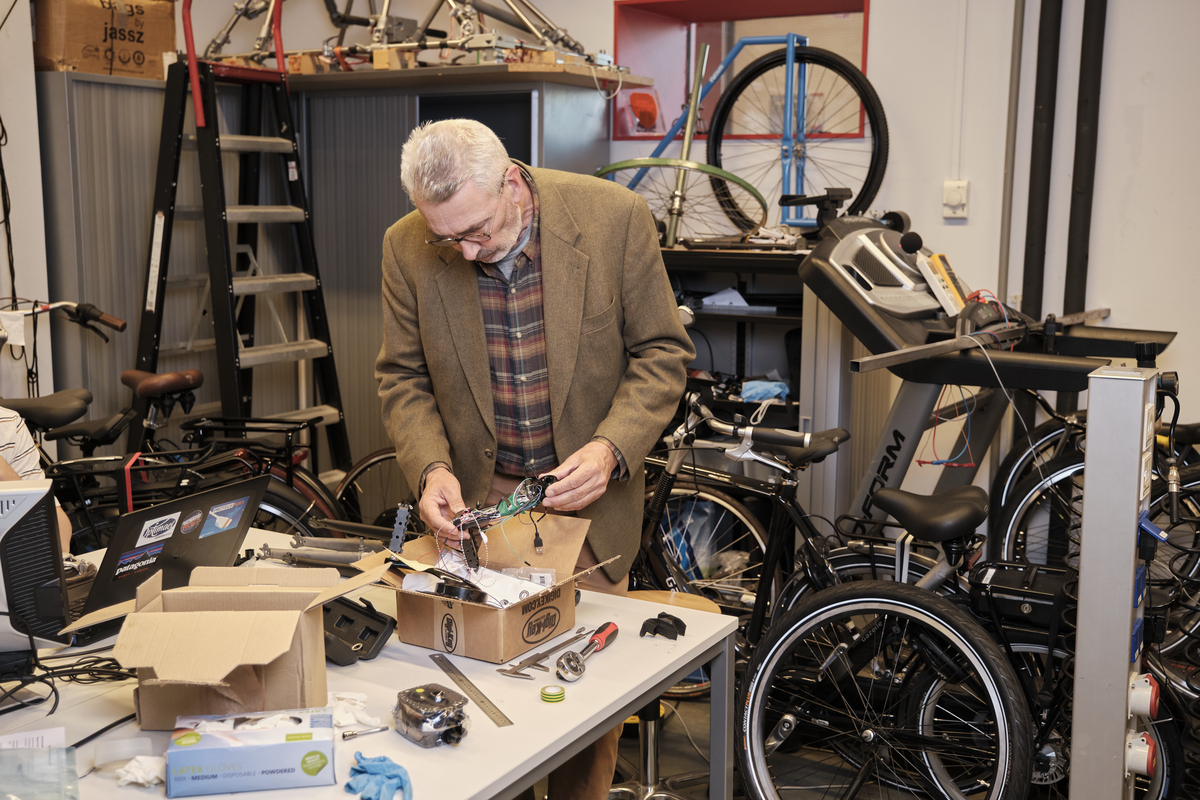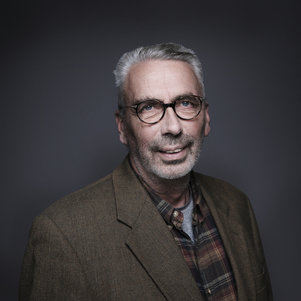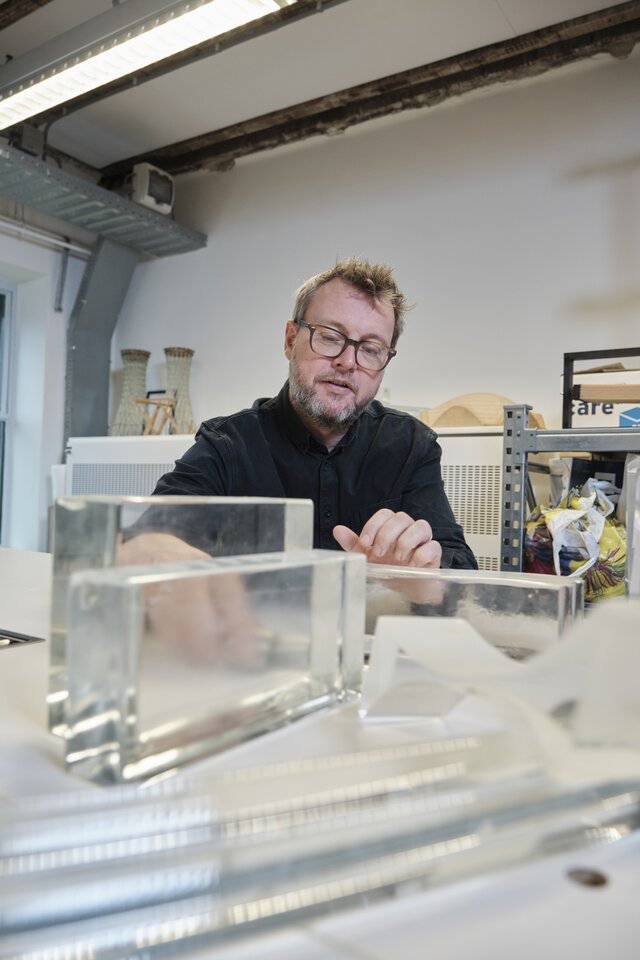He has a reputation as the leading researcher on bikes, a topic that elicits a certain level of scepticism in academic circles. Despite this, the research has been undeniably productive, not only in terms of fundamental knowledge, but also practically. For example, last year saw the launch of the steer-assist system as a way of combating the increasing number of accidents involving cyclists.
I ended up conducting bicycle research more or less by accident. I started to study mechanical engineering at the technical college (HTS) in Dordrecht and simply loved it. I’m still nostalgic about that atmosphere of nuts and bolts and tinkering with things. As a child, I always wished my father had a car scrapyard...”
“After the HTS I went to the predecessor of TU Delft and did my doctorate quite late. But I’ve always kept that fascination. A company like Hoogovens, with its iron and steel, warms the cockles of my heart. But, in the early days, I certainly wasn’t hankering to conduct research into bikes.”
Cornell
““The bikes only became part of the picture when I took a sabbatical in around 2001. I went to Cornell University in the US, where I met the researcher Andy Ruina. He was working on robots and biomechanics, just like me. We immediately clicked. At the time, he needed to submit a research proposal to the National Science Foundation and asked me if I would look into what scientific research had been done on bikes. It turned out there’d been a lot, but the knowledge was quite fragmented. This made me realise what huge opportunities there were for interesting research. That was back in 2002. And it hasn’t actually stopped since then….”
Science
When he returned to TU Delft, Schwab’s new-found fascination for bikes led to the establishment of the (now acclaimed) TU Delft Cycling Lab. Later, there was even a publication in the prestigious journal Science. “That was quite a milestone for my specialisation.”
Schwab and Jodi Kooijman (along with Ruina, Jim Papadopoulos and Jaap Meijaard) then turned their attention to writing an article on the question: why is a bicycle stable when travelling above a certain speed? A bicycle travelling at speed can be given a serious shove without it falling over. It was always thought that stability was strongly associated with two factors. Firstly, the gyroscopic effects of the spinning wheels would cause stability. Secondly, it was thought that the “trail” factor played a significant role. Trail is the degree in which the front wheel follows the steering axis. The publication of the TU Delft article in Science put an end to that old idea once and for all. Gyroscopic effects and trail can contribute to stability but are not necessary for it. This has not only been proven theoretically but experimentally as well.
Nothing new
As indicated earlier, this was a milestone. But bicycle designers continued to apply the old concepts, even though they were shown to be wrong. Nothing had essentially changed in basic bicycle design for almost a century. “At that time, we developed a mathematical model with some 25 physical parameters that successfully predicted the stability of a bicycle design at various speeds. We also experimentally proved that the insights behind the theory were correct.” “The model we developed will enable manufacturers to work specifically on the stability and steering of their bicycles. That could prove interesting for all kinds of bikes.” The Delft student team HPT’s high-speed bike, which briefly held the women’s world speed record last year, also benefited from the fundamental knowledge acquired.
Steer assist
The same also applies to conventional bikes. For example, recent years have seen the launch of the steer-assist bike. TU Delft and the bicycle manufacturer Gazelle have developed a prototype of a bike with smart steering assistance that may help to reduce the number of falls with bicycles. Schwab sees this as a necessary move. “The number of accidents involving bicycles is on the rise: it grew by around 30% from 2000 to 2010. Serious bike accidents are often the result of the cyclist losing control of their bicycle, and in many cases the victim is an elderly person. Every year, some 120 cyclists of 55 years and older are killed in an accident, while more than 4,000 cyclists over 55 are involved in a serious accident.”
Simple
“This is why we developed a prototype of an electric bike with steering assistance. This steer-assist system is the first system in the world that can keep a bicycle upright. It does this with a motor installed in the steering column that adjusts the steering if the bicycle threatens to fall over. This system keeps the bike and its rider stable at speeds above 4 km/h,” says Schwab.
“It’s actually technically quite simple. “There’s a sensor that detects when the bike is falling over, a motor and a processor to control the motor. The hardest part is finding the right algorithms for the processor, which was where our scientific research into bicycle stability proved enormously important.”
Further development
“We’re now working with Gazelle on further tests and development. Considerable research is still needed before the steer-assist system can be made available to consumers. The prototype is currently being used to test users’ experience of the steer-assist system and to find out what kind of assistance works best. “We now want to study what kind of assistance is appreciated by the cyclist and when.”
“This latter aspect, the human factor, is increasingly reflected in our research. It is shifting from fundamental bicycle research towards human and machine interaction. In that area, there is still a lot of work to be done. For example, we still don’t know exactly how we actually steer a bike. Another very important factor is user acceptance of technological innovations. What exactly do users appreciate and how far do they want to allow the influence of technology to reach, for example in the form of steer-assist systems?”
Olympic Games
Schwab’s field of research is therefore very wide-ranging. Sport has turned out to be an unexpected, but now quite important, part of the research. “This is something I would never myself have considered. But thanks to the Sports Engineering Institute here at TU Delft, that kind of research has been given a real boost.”
One of many examples of this is the model TU Delft developed to optimise the team time trial for Team Sunweb during the last Tour de France. Optimising the team time trial is far more complex than the individual time trial because the performance depends on several racers. One of the things involved is switching the positions of the cyclists. Mathematical models allow you to develop the ideal strategy. It’s also important to keep a record of exactly how long a cyclist is at the front, because that has a major influence on how quickly their body’s “battery” runs down. The model works out the times at the front on the basis of details including speed and wattage.
“We also looked at track cyclists and their bikes. What struck me immediately is that most bikes for track cyclists are actually too small to transfer power most effectively. Another subject we worked on was bicycle handling, with a particular focus on steering rigidity.”
The aim of all of this is to achieve some more great successes for our cyclists at the Olympic Games, later this year in Tokyo. Schwab will definitely be there.
Scepticism
At the age of 64, with the end of his long TU Delft career looming, Schwab still sees plenty of potential for further research. “The folding bicycle is one example. I don’t know about you, but mine is terrible to ride. I wouldn’t dare ride it no-handed. I would actually be interested in taking a completely new look at the whole basic design of the folding bike, and I feel similarly about the development of cargo bikes.”
“I’m a bit of an odd one out in the academic world. There has always been a certain level of scepticism: bicycle research, what has that got to do with science? But the Cycling Lab I initiated in 2002 will certainly continue to exist even if I am no longer working for TU Delft. That’s something of which I’m very proud.”




